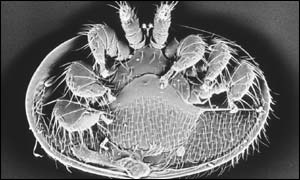Now i'm still on this Ph thing so here goes .
and from these test it does seem that with a lower Ph more brood is reared
The High Ph was the lowest, So would lower Ph syrup work better.
this is what i have read and it's late so i might of mest up big time and got it totally wrong

Title: Effect of diet pH on the consumption, brood rearing, and pH of worker jelly produced by caged honey bees.
Personal Authors: Herbert, E. W., Jr., Shimanuki, H.
Author Affiliation: Bioenvironmental Bee Lab., USDA-SEA, Beltsville, MD 20705, USA.
Editors: No editors
Document Title: Apidologie
Abstract:
The glandular secretion fed by nurse bees to worker larvae is described as 'worker jelly'. There were no significant differences in the pH of worker jelly produced by nurse bees (in 4 caged nuclei) offered a pollen substitute ranging in pH from 4.1 to 8.0. Over 80% of all jelly sampled had a pH within the range 4.00-4.30. The most food was consumed by bees offered pollen or pollen substitutes with a pH of 6.6, 4.7 or 5.5 (rather than 4.1 or 8.0). The most brood (mean of 4 nuclei) was reared by bees fed diets with a pH of 4.7 or 5.5 (575.6 and 549.1 cm², respectively); the least was by bees fed the diet with pH 8.0 (280.9 cm²). The results indicate that bees have the capability to buffer diets with extreme pH values and produce brood food within a narrow pH range.
Author.


















































